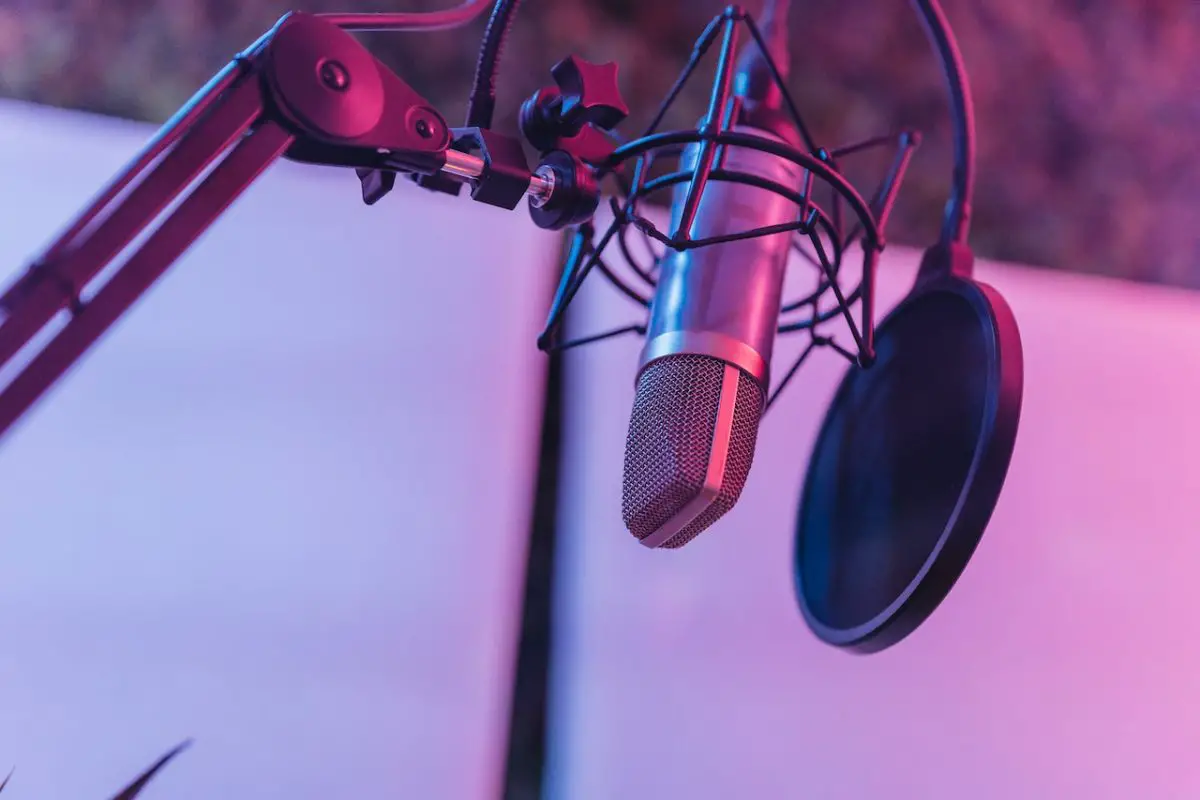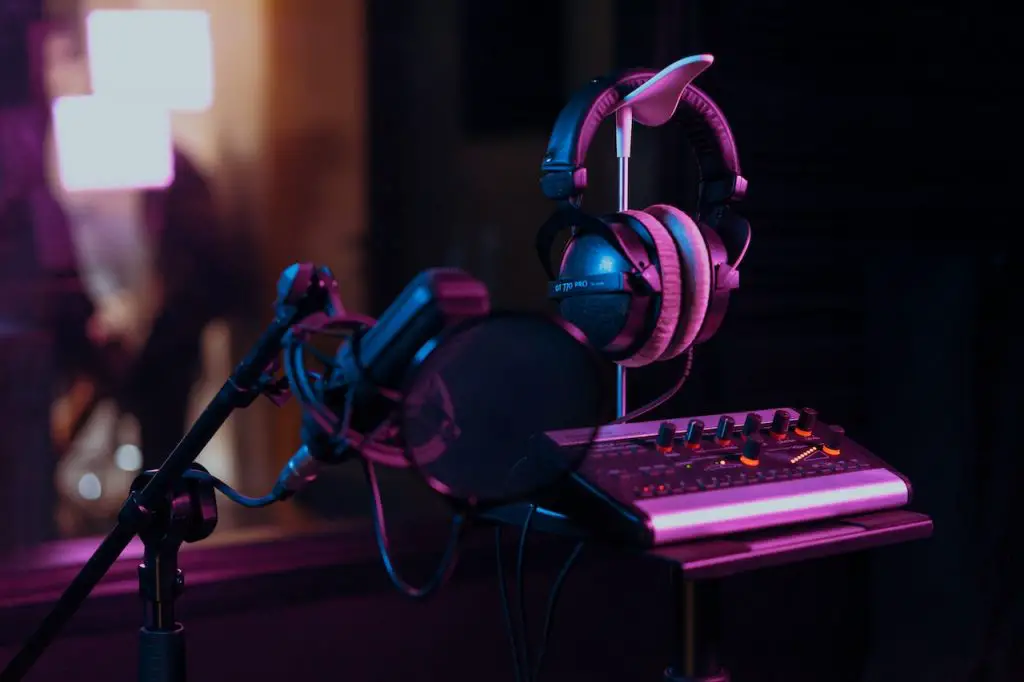Are you familiar with supercardioid microphones? These specialized microphones have a unique pickup pattern that allows them to capture sound from a specific direction, making them a popular choice for recording and live sound applications. Let’s dive in and find out what makes a supercardioid microphone so super!
In this article, we’ll explore what a supercardioid microphone is, how it works, and some of its important characteristics. We’ll also provide tips on how to use your supercardioid microphone and get the most out of it!
What is a supercardioid microphone? A supercardioid microphone is a type of directional mic that has a narrow polar pattern. It is most sensitive to sound directed toward the mic’s on-axis because of the mic’s rear lobe, and the null points are at 127 degrees and 233 degrees.
What is a supercardioid microphone?
A supercardioid microphone is a kind of directional mic. The polar and pickup patterns of a supercardioid microphone are very narrow. It is most sensitive to on-axis noises, with a large rear lobe of sensitivity and null points at 127° and 233°.

Supercardioid microphones have a heart-shaped pickup pattern, which is more directional than that of a cardioid microphone but not as directional as a shotgun microphone. This allows them to capture a slightly wider area of sound than a shotgun microphone while still providing good isolation of the desired sound source.
The term “supercardioid” refers to the mic’s ability to produce a “super-directional” sound wave. This means that, unlike a normal microphone, this type of microphone simultaneously picks up sounds from everywhere. This extra data could improve the recording quality, making it easier to record voices and instruments.
AKAI Professional MPK Mini MK3

AKAI Professional MPK Mini MK3
What are the characteristics of a supercardioid microphone?
A supercardioid microphone can be distinguished from other types of directional mics through these characteristics:
1. It is most sensitive to sound in the front and less in the back
The pickup pattern of a supercardioid microphone is focused on what is directly in front of it. The angle at which a microphone picks up the most sound is known as its “acceptance angle,” and for a supercardioid microphone, it has a very directional supercardioid polar/pickup pattern with null points at 127° and 233° and a rear lobe of sensitivity.
A supercardioid microphone’s sensitivity is maximized depending on the sound source you direct it towards, making it ideal for close-miking.
2. It has a smaller pickup area than omnidirectional microphones
Supercardioid microphones have a considerably smaller pickup area than omnidirectional microphones, blocking off-axis sounds. They are most sensitive to on-axis sounds, where the mic “points,” and less sensitive to sounds from other directions.
A supercardioid microphone’s sensitivity is maximized depending on the sound source you direct it towards, making it ideal for close-miking. This makes it a great choice for recording many instruments close together or isolating a single source in a noisy environment. But a supercardioid mic has a sensitive rear lobe, so it needs to be placed carefully to separate sound sources.
3. It has null points at 127° & 233°
The optimal supercardioid polar pattern contains cold regions of 127 degrees on each side of the on-axis line. Theoretically, the microphone won’t pick up any sound from the directions shown with null points. As a result, the sound level will drop a lot, especially at high frequencies. Sound can reach the microphone from non-null point directions due to the physics of sound, acoustics, and reflections.
4. It works on the pressure-gradient principle
The pressure-gradient theory is at the heart of all directional microphones, including supercardioid mics. The diaphragm of a supercardioid mic is symmetrical, allowing sound to enter from any side. Diaphragm movement and a corresponding mic signal result from pressure differences on opposite sides of the mic diaphragm.
The pressure gradient method used by supercardioid microphones needs an acoustic labyrinth to change the sound waves’ phase before reaching the back of the diaphragm. Using carefully planned acoustic labyrinths that reflect off the back of the diaphragm, the arrival times of sound waves are changed. This is the actual mechanism responsible for the characteristic supercardioid polar pattern.
5. It has a 5:3 ratio of an omnidirectional and bidirectional pattern
The supercardioid polar pattern may be thought of as a 5:3 ratio of the omnidirectional pattern to the bidirectional pattern, in contrast to a cardioid microphone’s 1:1 superposition of the omnidirectional and bidirectional polar patterns.

When is a supercardioid microphone used?
A supercardioid microphone is typically used in situations where you need to isolate a sound source from a lot of background noise or other instruments. Supercardioid microphones have a more directional polar pattern than cardioid microphones.
They pick up sound from a smaller angle in front of the microphone and reject more sound from the sides and rear. As a result, they can provide better isolation from room noise and nearby instruments and can be more resistant to feedback than cardioid mics.
Supercardioid microphones are commonly used in situations in live music. They are often used to pick up a specific instrument, such as a guitar or a snare drum while rejecting sound from other instruments on stage. In film and video production, they are often used as boom microphones to capture dialogue while rejecting noise from the surrounding environment.
Supercardioid microphones are a good choice when you need to isolate a sound source and reject noise from the surrounding environment, but they do require the user to maintain a more consistent position directly in front of the mic compared to cardioid mics.
If you want even more tips and insights, watch this video called “Cardioid and Super-cardioid Microphones” from the Pushing Faders YouTube channel.
Frequently asked questions (FAQ)
Do you still have questions about supercardioid microphones? Below are some of the most commonly asked questions.
Are hypercardioid and supercardioid the same?
The hypercardioid pick pattern is similar to the supercardioid but is even more limited. Also, it has heightened sensitivity to sounds approaching from behind. This is because a wider angle and higher amplitude are used to pick up sounds from behind compared to a super-cardioid microphone.
What is the difference between cardioid and unidirectional?
These two terms, “cardioid” and “unidirectional,” are often used interchangeably to refer to microphones that primarily pick up sound from one direction. However, cardioid microphones are a specific type of unidirectional microphone that has a heart-shaped pickup pattern.
Are shotgun mics supercardioid?
Shotgun mics are examples of high-directionality microphones, which pick up sound from a certain direction. As a result, they have a narrower “sweet spot” than a standard cardioid or supercardioid microphone.
Conclusion
So, there you have it, folks. I hope I gave you a better idea of what a supercardioid microphone is all about. Many important factors must be considered when selecting the right mic for your project. But overall, a supercardioid microphone will give crisp and clear audio with rich detail.
So, do you need a supercardioid microphone? And did I cover everything you wanted to know? Let me know in the comments section below (I read and reply to every comment). If you found this article helpful, share it with a friend and check out my full blog for more tips and tricks on music production. Thanks for reading, and never stop making music.
Key takeaways
This article covered what a supercardioid microphone is. Here are some key takeaways:
- A supercardioid microphone is a kind of directional mic.
- Supercardioid microphones have a heart-shaped pickup pattern, which is more directional than that of a cardioid microphone but not as directional as a shotgun microphone.
- When recording voices, instruments, or other sounds near the microphone, supercardioid microphones are ideal because of their pinpoint directional pickup.
- A supercardioid microphone’s sensitivity is maximized depending on the sound source you direct it towards, making it ideal for close-miking.















